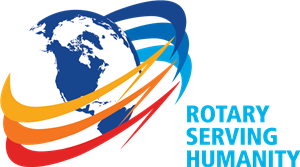Rotary Action Group Against Slavery
Posted by Mark Little
(The following letter describes a problem that David Black from the Rotary Club of Dunedin, NZ will address in November, when he discusses the "Starfish Program" with CMIRC)
Dear Rotary Friends:
Please check the link below to a one off edition of our Action Group’s Newsletter which provides useful information depicting the very real connection between modern slavery and RI’s six Areas of Focus. It is an especially important, useful and informative document for those Rotary Clubs and Districts which are about to embark upon the completion of an application for a Rotary Foundation Global Grant.
Our RAG exists to raise awareness of the existence of slavery and to encourage rotary clubs to get involved with anti-slavery projects which help to protect children from slavery and its consequences.
Nowadays, clubs are encouraged to join forces with other clubs to participate in larger, self sustaining projects, especially if grant funding is to be sought from Rotary Foundation. But in order to be successful, a club’s global grant application must, inter alia, “align with one of our areas of focus”. Rotary Foundation has listed six areas of focus. These are a) basic education and literacy, b) maternal and child health c) peace and conflict prevention/resolution, d( water and sanitation, e) economic and community development and f) disease prevention and control.
Most people will readily accept that the first two listed areas of focus will have a clear cut impact on or be affected by the numbers of enslaved victims. On the education front, it is self evident that getting vulnerable children off the streets and into schools is one of the best methods of preventing potential victims falling into the clutches of traffickers. As far as child health is concerned, today’s slaves are more likely to suffer from unattended health problems than their counterparts in previous centuries. This is because modern slavery, whilst existing in many different forms, shares two key characteristics that distinguish them from slavery in the past. Today slaves are “cheap and disposable”.
An average slave in the American South before the Civil War would have cost at today’s prices something like $40,000. Today you can buy a slave as cheaply as $40. Because there is a glut of potential slaves on the open market, they are not worth much. They are like the cheap pencils and pens that firms purchase for office use. No one really worries about the care and maintenance of these writing instruments or files title of ownership. Pens and pencils are disposable and so are many slaves. In other words slave holders operate on the principle that there is no real need to care for them if they are sick, because they can be easily replaced and at little cost. Preventing or rescuing children from slavery will definitely have a beneficial impact on children’s health.
There is also a very real connection/relationship between modern slavery and the other four areas of focus. This will become clear by reading the attached document which has been masterminded by our Vice Chairman, Stephen Sypula.
Please will you ensure that this important document relating to RI’s Areas of Focus, is made available to all those Rotary Clubs and Rotarians who are about to submit or are in the throes of submitting a Global Grant application.
Yours in Rotary
Mark Little
Chairman & Founder
Rotarian Action Group against Slavery
